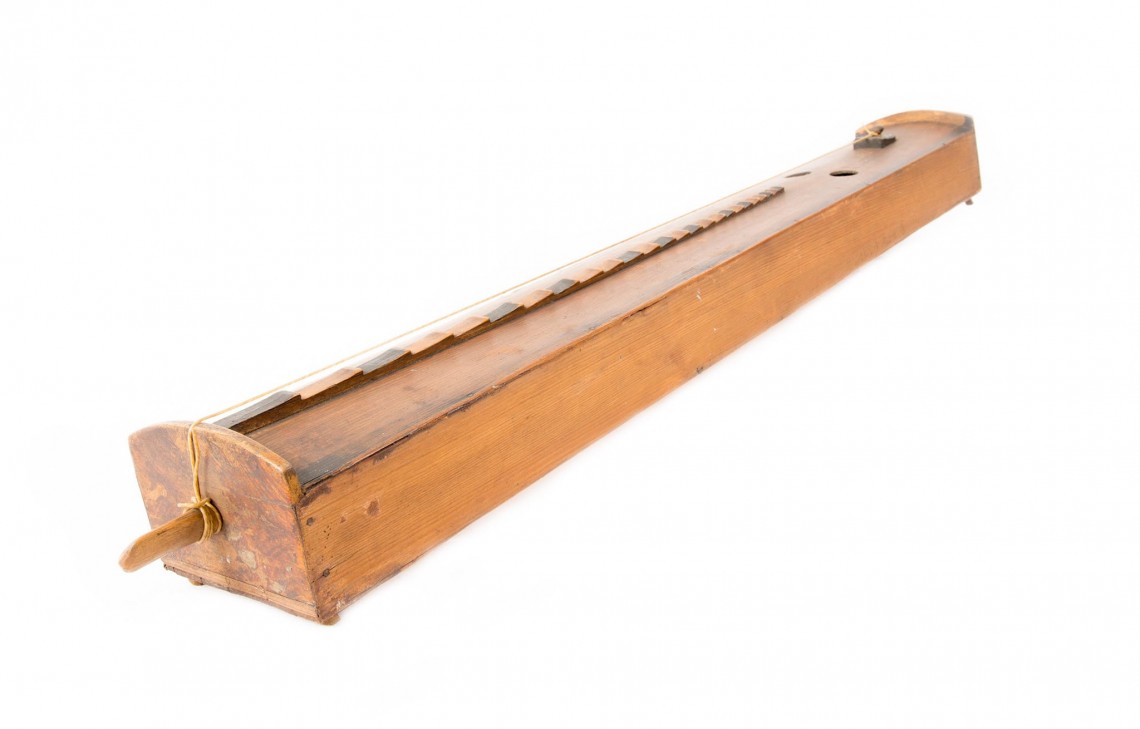Ģīga / Giga
Bowed Instruments
Europe
Between 0 and 1000 AD
Video
Latvia, a small yet culturally rich country in the Baltic region, is renowned for its deep-rooted musical traditions. Among its array of unique folk instruments, the Ģīga holds a special place as a symbol of Latvia’s artistic heritage. This enigmatic string instrument, often overshadowed by more prominent Baltic instruments like the kokle, deserves its moment in the spotlight for its historical significance, craftsmanship, and melodious charm.
A Glimpse into the Past
The Ģīga is an ancient Latvian bowed string instrument that traces its origins to medieval times. Its name, believed to be derived from the Middle High German word “gīge,” suggests its early influences from Western European string instruments. However, over centuries, the Ģīga evolved into a distinct symbol of Latvian folk music, embodying the nation’s spirit and cultural identity. Traditionally, the Ģīga was crafted and played by rural communities as part of everyday life. Its sounds resonated during festivals, family gatherings, and seasonal celebrations. Despite its long history, written records and surviving instruments are sparse, making the Ģīga a subject of ongoing research and rediscovery among ethnomusicologists and artisans.
The Craftsmanship of the Ģīga
Creating a Ģīga is an art form in itself. The instrument typically consists of a wooden body, a neck, and strings, with a bow used to produce sound. Latvian artisans favor local wood varieties such as birch, spruce, or maple, which contribute to the instrument’s resonant tone. The design of the Ģīga is minimalist, reflecting the pragmatic yet artistic sensibilities of Latvian folk culture.
One of the distinguishing features of the Ģīga is its tuning system. Unlike many modern string instruments, the Ģīga often employs a diatonic or modal tuning, which aligns with traditional Latvian folk scales. This tuning allows it to complement the melodies and rhythms of other folk instruments, creating a cohesive and enchanting ensemble.
The Sound of Tradition
The Ģīga’s voice is both haunting and soothing, characterized by its warm, rich tones. When played, it produces a resonant, slightly nasal sound that can evoke a sense of nostalgia and connection to nature. This makes the Ģīga a perfect accompaniment to Latvian folk songs, which often revolve around themes of love, work, and the changing seasons. While the instrument is traditionally used to perform folk music, contemporary Latvian musicians have explored its potential in various genres, from classical compositions to experimental and fusion music. This adaptability ensures that the Ģīga remains relevant in the modern musical landscape while preserving its historical essence.
Revival and Modern Significance
Like many traditional instruments, the Ģīga faced a decline in popularity during the 20th century, when industrialization and global cultural influences overshadowed local traditions. However, recent decades have seen a resurgence of interest in Latvia’s musical heritage, spurred by a growing appreciation for folk culture and identity.
Organizations and cultural initiatives in Latvia have been instrumental in this revival. Workshops, festivals, and educational programs now focus on teaching the art of playing and crafting the Ģīga. For instance, the Latvian Song and Dance Festival, a UNESCO-recognized event, frequently features performances that highlight the instrument’s unique charm.
Modern artisans and musicians are also innovating with the Ģīga, introducing variations in design and playing techniques to appeal to contemporary audiences. These efforts not only preserve the instrument but also ensure its evolution as a living tradition.
Learning the Ģīga
For those intrigued by the Ģīga, learning to play it can be a rewarding experience. Beginners typically start with basic bowing and fingering techniques, guided by traditional Latvian melodies. While formal instruction may be limited outside Latvia, online resources and workshops hosted by Latvian cultural organizations offer opportunities for enthusiasts worldwide to explore this instrument. Playing the Ģīga is not just about mastering technique; it’s also about connecting with the cultural narratives embedded in Latvian folk music. Each tune tells a story, whether it’s a tale of ancient rituals, the beauty of nature, or the resilience of a community.
Embracing the Ģīga’s Legacy
In an era where globalization often threatens to homogenize cultural identities, the Ģīga stands as a testament to the enduring power of tradition. It represents not only Latvia’s musical ingenuity but also the universal human desire to create and share meaningful art.
As Latvia continues to embrace its heritage, the Ģīga serves as both a bridge to the past and a beacon for the future. Musicians, artisans, and cultural enthusiasts alike are ensuring that this ancient instrument remains a vibrant part of the country’s artistic tapestry.
FAQ
What is the history of the Ģīga musical instrument?
The Ģīga is a traditional Latvian string instrument that dates back to the Middle Ages. It was commonly used in Latvian folk music, particularly in rural communities. The instrument is believed to have been influenced by similar European bowed instruments and has played an essential role in preserving Latvian cultural heritage through traditional songs and dances.
What are the types of Ģīga musical instruments?
The Ģīga typically comes in two main types: the smaller variant, often used for melodic playing, and the larger one, which provides deeper, richer tones. Both types are constructed similarly but differ in size, string configuration, and pitch range. Modern versions of the Ģīga are adapted to contemporary music styles while maintaining traditional characteristics.
What are the key characteristics of the Ģīga musical instrument?
The Ģīga is a stringed instrument played with a bow, featuring a hollow wooden body and gut or metal strings. It produces a rich, warm sound that complements both solo and ensemble performances. The instrument is highly versatile and is often decorated with intricate carvings, reflecting its cultural significance in Latvian traditions.
 Links
Links
References
Other Instrument
Categories


















